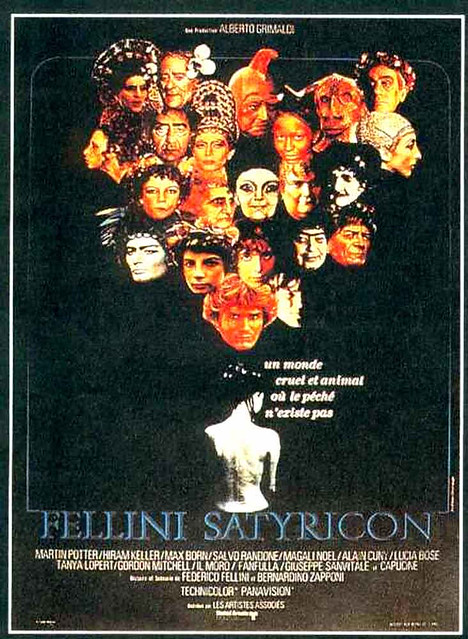
Fellini’s Satyricon
If one positive thing is to be said about the aberration that was ‘Satyricon’, it is that at least Fellini seems to have fulfilled his own warped criteria.
In marked contrast, ‘Satyricon’ was offensive, crude and disgusting. And I know Fellini's 'reasons' behind it; he was portraying an entirely amoral world, but none of that mattered. I watched for the first ten minutes and I felt very much attacked and disgusted. It was a depraved and ghastly film that should be cut up into little pieces and disposed of along with waste and menstrual matter. Except that would be a dishonour to the waste and menstruation.
‘Satyricon’ was clearly designed to shock, albeit in a decidedly lackadaisical way. But there are better ways to shock an audience. The painting ‘The Death of David Kelly’ by Dexter Dalwood is gently shocking through its bold colours, collage-like style and the understated title. Things that are too ‘in-your-face’ are often not well received. I suppose the thing to consider is whether you prefer being cleverly quiet, or brashly memorable.
Fans of the noxious film will tell me 'that was the intention'. But I firmly believe that filmmakers, artists and designers have a great responsibility. I was reading snippets of the Thomist philosopher Jacques Maritain, who believes that ‘Art by itself tends to the good of the work, not to the good of man.’ That definition would justify a lot of art in all forms; it is definitely true. Nobody considers the wider implications of the work, only that the work be good and acceptable in the eyes of the artist and the arty minority. Maritain also believes artists are the ones who (and this may be especially true in today’s anti-religious climate) provide mankind with food for the spirit, important things which affect the inner person, whether or not we want to pretend it does not. I say, in a world where perversion is generally shunned, why does the art community seek specifically to teach and indoctrinate us in perverse things, and why is perversion celebrated? Indeed, during a search on the web I found that ‘Satyricon’ received standing ovations and positive reviews worldwide.
Perhaps we should all watch Fellini’s ‘masterpiece’ intently; it shows us a way of life that should never be sought after. Perhaps it will enrich our lives... But I doubt it. Rather, I can truly say I’ve learned firsthand the meaning of the phrase ‘clinical shock.’ My brain has only just stopped crying and shuddering in pain.
(References:
No comments:
Post a Comment